Park City, Utah, August 3—There are a number of pleasant surprises in Harley-Davidson’s 2012 model year line-up, but none of them came as much of a surprise when the moto-press corps convened at the St. Regis Deer Valley resort in this uber-chic mountain aerie for the official unveiling. The lack of surprise at the press launch—the annual affair that historically has given the press an exclusive first exposure to what lay in store for the year ahead—owed to two factors. The first is that for unprecedented reasons of providing “greater continuity of supply in dealerships during the peak summer selling season,” Harley-Davidson started shipping some new models back on June 29 well before either the dealers or the press were granted their usual exclusive access to the information. From that episode we learned that the Touring models would all be equipped with the Twin Cam 103 powertrain, and that the Street Glide Trike had been discontinued.
And the second surprise-spoiling factor was that the press launch this year was scheduled to coincide with the Sturgis rally and offer journalists the opportunity to ride a new model to the Black Hills, and as a result occurred a full week and a half after all details of the 2012 collection had been released to the general public and all models were bound for the dealer network.
Thus, when we arrived in Park City, pretty much all had been revealed—so much so, in fact, that Thunder Press North Editor Marje Kleiman (and a good many others) had already purchased a new Dyna Switchback, customized it, and packed it up for Sturgis.
Hind teat treatment of the estimable motojournalist fraternity, you might reasonably conclude, but that would be hasty. You see, despite the slick of spilled beans we slid into town on, there was, in fact, one vehicle at the St. Regis that no dealer or customer—not even the self-satisfied Marje—could lay claim to having ridden: The dazzling new St. Regis Funicular. That would be my scoop. We’ll get to that.
Putting on the inches
Whenever Harley-Davidson makes a motor change of any kind it’s big news, and it doesn’t happen very often. We have that for 2012—sort of. The TC103 is now standard equipment on all Big Twins with the exception of the budget-minded FXDC Dyna Super Glide Custom and the FXDB Dyna Street Bob which retain the TC96. It’s not a new motor by any means, though, having appeared as the stock powerplant on the Trikes since 2009, on the Electra Glide Ultra Limited since 2010, and on the Road Glide Ultra and Road King Classic last year, at which time it was also offered as a factory option on both the Street Glide and Road Glide Custom. This is, however, an entirely new development for both the Dyna and Softail platforms, so there’s that.
The distinct benefit of the TC103 having been phased into OE production over three years is that it brings no surprises, and has proven itself a stout-hearted performer with gobs of torque, laudable fuel economy, and unquestioned reliability.
Enter the Switchback
As significant as the TC103 upgrade is for 2012, it pales in comparison to the utterly unanticipated debut of the new FLD Dyna Switchback, bar none the most irresistible and market-savvy model to come out of Milwaukee since the Street Glide in 2006. This model is innovative in so many respects, it’s almost dizzying. For starters, it returns the “convertible” concept to the Dyna platform for the first time since the FXDC-Conv left the scene in 2000. That “twofer” approach to two wheels was a real winner in our view, but, as it turned out, too utilitarian for those custom-conscious times. It didn’t sell well. The concept was revived by the Custom Vehicle Operations two years ago on the lovable CVO Convertible, and has fared much better in that haute-custom trim, and it was about at that time that The Motor Company quietly set about returning the form to the OE collection.
Lessons had been learned from the CVO’s efforts, and more importantly, the times had changed—the consumer base had grown less fashion conscious and more practical-minded. The time was ripe for the Switchback.
Even so, Milwaukee did not take the easy way out. They didn’t simply put detachable touring gear on an existing model, but started from scratch with the brilliant notion of engineering the first FL version of a Dyna, complete with floorboards, hard panniers, and imposing shrouded front forks crowned by a bold headlamp nacelle. (The 2001 FXDP Police Defender was actually the first Dyna with floorboards, windscreen and hard bags, but it wasn’t officially an FL—and, damn, was it ugly.)
The objective of the Switchback, we’re told, was to slot into an “intersection of needs,” creating a package that combined a smaller size, a more attractive price point, and a greater versatility than current touring-oriented models offer. The target demographic is described as including 35–45-year-old riders seeking an economical entry level touring mount, women who were put off by the sheer bulk of the Touring models, and “Boomerangs”—i.e. aging Boomers downsizing from full-boat dressers to something less physically demanding.
And the result is, in essence, a lighter, faster, less expensive and more versatile take on the perennially popular Road King—one that’s a hundred pounds lighter, $1,500 less costly, and sporting bags that detach and leave few visible traces of their absence.
Bringing that package together required a good deal of clean-sheet engineering. Delivering a model that could haul two-up touring weight while remaining a nimble handler and providing an inseam-friendly 26.1-inch laden seat height required an entirely new suspension set-up, one that brings a cartridge-style front end and nitrogen-charged emulsion rear shocks to the machine. Described as a “quick response” suspension, the combination provides a commendable balance between fast handling, long-mile comfort and an aversion to bottoming out on jarring pavement conditions.
Complicating matters for the design team was the decision to give the Switchback a traditional Touring FL front end with upper fork shrouds and a bold headlamp nacelle based, loosely, at least, on the Road King. Weight and steering properties were the sticky issues involved and are effectively addressed primarily through the use of cast aluminum instead of zinc on the nacelle, a tightening up of the front end geometry, and the use of a low-profile Dunlop 130/70B18 tire.
Also requiring a clean-sheet approach were the Switchback’s saddlebags which were expected to hew to traditional appearances but—in convertible fashion—detach quickly without leaving behind unsightly mounting brackets. The result is bags that are essentially 3/4-scale replicas of existing Touring bags, both in space and weight capacity. The quick detach hardware consists of a simple interior knob that releases the latch mechanism, and three chrome docking posts affixed inconspicuously to the rear fender. Very slick. A new hinge and latch arrangement secures the lid. It takes some getting used to, but once mastered can be operated with one hand.
One last detail in creating a convincing FL version of the Dyna was the exhaust system. Here the designers sought to create a “custom touring exhaust” and came up with an imposing 2-into-1 setup with a revised header profile that definitely looks the part and issues a pleasing rumble on the road. A new exhaust bracket, transmission case, and revised motor oil fill bung were fashioned to accommodate the pipes.
The Switchback is the scene-stealing highlight of the 2012 Dynas, but there are a host of other improvements and features shared across the entire platform. Most noteworthy is the availability of an anti-lock braking system on the bikes for the first time. Offered as part of the $1,195 Security Package option that also includes Smart Security, the Dyna-specific ABS uses a single hydraulic control unit located inconspicuously beneath the battery box. The platform also receives the improved hand control switch modules and multi-function gauge—one that incorporates a gear indicator and digital tachometer—that came to the Softails last year, and have been further refined for 2012.
Birthday makeover
The VRSC platform goes into party mode for 2012 in celebration of its 10th anniversary. What that means in practice is commemorative badging on the machines, and a nostalgic finish treatment offered on the Night Rod Special that uses Silver Pearl paint to recreate the look of the original bare anodized aluminum body on the original 2002 V-Rod. It also comes with a chrome-plated exhaust system—but thankfully not the swoopy sci-fi setup of the original.
Those cosmetic flourishes are, however, far from the whole V-Rod story this year, as the Night Rod Special gets a thorough makeover that gives it a dashing new profile, greater handling prowess, and improved operator ergonomics. That’s fitting. Over the course of the last decade, a lot of things have been tried with the VRSC platform, and a number of variations have come and gone, and in the final analysis it’s been the Night Rod Special that has resonated most resoundingly with the consumer public both domestically and abroad. It deserved some special treatment.
A tighter front rake and a set of inverted front forks (which recall the late and lamented Street Rod of years past) combine with retuned rear shocks and dramatically lighter wheels to give the Night Rod Special a noticeably enhanced agility at any speed. A small “speed screen” over the headlight replaces the more prominent flyscreen that preceded it. The revamped model also gets a new composite tail section this year, one that incorporates a super-sanitary LED lighting array with a frenched-in taillight and center-mount license plate frame.
The most welcome departure from previous iterations of the Night Rod Special comes in the new bike’s operator ergonomics. The exaggerated clamshell posture previously enforced by the model’s ergonomic triangle of seat, pegs and grips has been moderated substantially by the addition of a new reduced-reach handlebar and footpegs that have been repositioned slightly rearward. A new restyled seat has also been brought to the constellation which will please the operator if not the passenger—the new pillion is a stern perch about the size and consistency of a panini.
Thinning the herd
The Softail family finds itself downsized in 2012 with the retirement of its two most radical and awesomely-named models, the Cross Bones, which we’ll miss terribly, and the Rocker C, which we won’t. The remaining models include the Heritage Classic, Deluxe, Wide Glide, Blackline, Fat Boy and Fat Boy Lo. All models are now powered by the TC103B, and all models benefit from a reshaping of the hand control switch buttons, and the addition of a flash-to-pass function on the dimmer switch.
The Fat Boy and Fat Boy Lo share in common a new one-size-fits-all handlebar, one that’s been designed for a reduced reach and improved ergonomic positioning of the hand grips on both models. They also now share the Fat Boy Lo’s saddle, giving Fat Boy riders an easier reach to the pavement.
Offered as an option on the Heritage Classic and Deluxe are new Tubeless Chrome Profile Laced Wheels, aluminum units that reduce weight and spin inertia, and improve handling. The tubeless design also promises easier tire installation as well as simpler road repairs.
Crowded at the top
With theTC103 now the standard powertrain on all the Touring models, the distinctions between a number of them have become more subtle, especially between the Ultra Classic Electra Glide and Electra Glide Ultra Limited. A handful of styling differences and touring amenities now separate those two luxo-tourers, and with the coming of the luxo-touring Road Glide Ultra to the platform last year, things have tightened up considerably at the top. It’s an embarrassment of riches for the Touring faithful, but not a surprising move by The Motor Company considering the huge popularity of the big dressers, and their dominance—along with the top-selling Street Glide—of domestic motorcycle sales.
The motor upgrade brings a similar tightening of packages to the Road King and Road King Classic where, again, some styling and equipment details distinguish the siblings, with the Classic incorporating a number of stock features—namely ABS, Smart Security, and cruise control—that are only offered as options on the standard Road King.
All of the Touring models except the Ultra Limited will offer the aforementioned Tubeless Chrome Profile Laced Wheels as an option, and the Road Glide Ultra has been fitted with the wickedly effective little wind deflectors beneath the fairing that debuted on the CVO version of the model last year.
XL holding pattern
The Sportster family’s taking a little breather this year and it’s well-deserved considering how many new models it’s produced in the recent past. Even so, Milwaukee would like to remind you of the ambitious H-D1 customization program that it rolled out with the reintroduction of the XL1200C 1200 Sportster Custom early this year. That program, you’ll recall, offers, like, a bazillion customizing/personalizing possibilities on that model. Once configured online or at the dealership, the resulting creation is turned around by the factory in about four weeks.
(Other than that it’s crickets on the XL front, but on an irrelevant side note, we’d like to point out that 2012 would have been the 35th anniversary of Willie G. Davidson’s unqualified masterpiece, the XLCR Café Racer, which remains to this day the sexiest machine Milwaukee’s ever produced. We can’t help but see that oversight as an opportunity missed. )
Family of one
While the Tri Glide Ultra Classic has proven a gratifying sales success for The Motor Company since its 2007 launch, the same cannot be said for the Street Glide Trike. That model failed to achieve the kind of broad appeal that made the Street Glide upon which it was based the showroom sensation it’s proven to be. It thus is no more.
Oh yeah… the funicular
And that brings us full circle back to my big scoop for 2012, the St. Regis Funicular. For the uninitiated, a funicular is a type of cable car used to climb steep inclines like the one that rises the precipitous 500 vertical feet from downtown Park City to the ski lodge where we were billeted. This one is the first to be built at a ski resort in North America, and that gave me pause since I’ve heard all kinds of horror stories about ski lodge trams crashing or stalling out and stranding people for days. Cannibalism is not unusual, I think.
Nevertheless, after a long evening of Harley-hosted whiskey tasting and fine dining at the High West Distillery, I found myself unexpectedly herded onto the funicular along with the rest of the frankly unappetizing moto-press corps for the return to the St. Regis. Packed in like a Tokyo commuter, hanging from a strap and lurching up the mountain stupefied on rye whiskey and bison steak, I nevertheless was able to maintain my professional bearing and take notes on this brilliant new conveyance. They read: Slflevlng atplot Vrdfinsh hooznmdmnfot?
When the fog had broken over my cerebrum some time the next morning I was able to decipher these observations as: Self-leveling, autopilot, V-Rod finish, who’s on my damn foot?
While Harley-Davidson is mum on whether or not the funicular is, in fact, the prototype for a future Boomerang-targeted model, that’s to be expected. They never discuss future plans—but, as always, we can read between the lines and find confirmation in their silence. You read it here first.



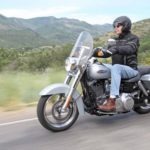
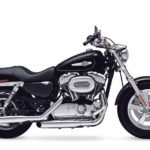
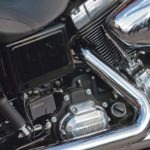
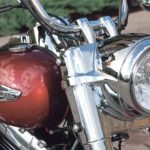

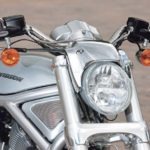
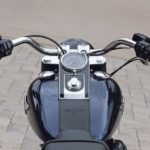

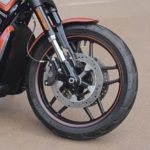





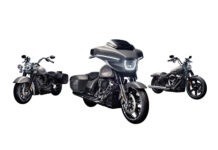
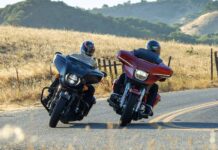
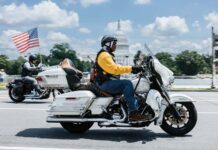

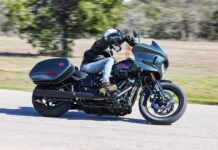










I have an older copy of the Harley-Davidson retail price guide you printed in ’08 and I was wondering if you have printed one for 2013?
Thanks,
Josh
That was a part of our October issues’ 2013 Harley-Davidson Press Launch feature. Look for the story under “Motorcycles” on our home page – we’ve added a link to download the 2013 Price Guide at the end of the online feature.
-JG